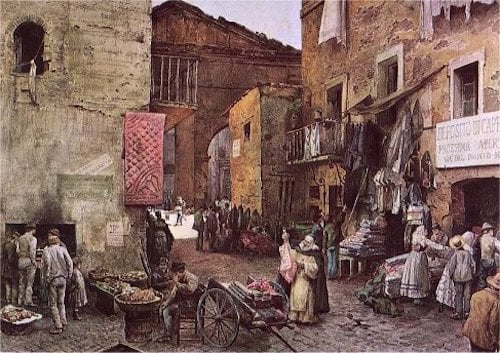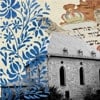The Protestant Reformation
Martin Luther, who lived in the 1500s and sparked the movement against the Catholic Church that resulted in the Protestant Reformation, started out friendly to the Jewish people. Hoping to attract Jews to his new brand of Christianity, Luther stated that theI advise that their houses be razed and destroyed Catholics' mistreatment of the Jews was a crime against G‑d's Chosen People. However, when Luther realized that the Jews would not become Lutherans, he reversed himself and spewed forth foul anti-Semitic venom. Luther's statement, "the Jews are our pest and misfortune," was copied almost verbatim by the Nazis. He recommended:
“First, to set fire to their synagogues or schools.
Second, I advise that their houses also be razed and destroyed.
Third, all their prayer books and Talmudic writings, in which such lies, cursing, and blasphemy are taught, be taken from them.
Fourth, I advise that their rabbis be forbidden to teach.
Fifth, I advise that safe conduct on the highways be abolished completely for the Jews.
Sixth, I advise that all cash and treasure of silver be taken from them.
Seventh, let whoever can, throw brimstone and dogs out of the land.”
Some historians are convinced that Martin Luther, considered the first great national prophet of Germany, not only outdid all previous Christian anti-Semites, but also, in his outbursts of hatred, was the first major step to the Holocaust.11 At the Nuremberg trials in 1946, for example, Julius Streicher, the editor of the vicious anti-Semitic Nazi newspaper Der Sturmer, stated that if he is on trial, then Martin Luther should also be in the dock with him.12 Indeed, reading Luther's diatribes against the Jews, it is difficult not to agree with Streicher. To its credit, in 1994 the Lutheran Church repudiated Luther's anti-Semitic words, calling them false.
The First Ghettoes
Although no official edict required it, in the Middle Ages the Jews lived in separate quarters. Finally, in 1516 in Venice, Italy, the Jews were ordered to relocate to the site of an ironworks factory, thus creating the first ghetto. (Ghetto is the Italian wordRapidly, ghettoes sprung up all over Europe for iron foundry.) Rapidly, ghettoes sprung up all over Europe. Generally, the ghettoes were located in the most run-down part of town. For example, in Rome, the ghetto was on the banks of the Tiber River, which flooded frequently. Walls were constructed around the ghetto, Jews were locked in at night, and Christians were paid to watch the walls.
Physical life in the ghetto was very difficult. As the Jewish population grew, overcrowding became severe. Houses were built tall and thin, as there was no room for expansion. Fires spread quickly, and on numerous occasions entire ghettoes were destroyed. However, spiritual and communal life was greatly enhanced in the ghetto. Jews moved closer together, and could share their joys, tragedies, and goals with each other. Rabbis and synagogues were within close proximity and easily accessible. A spirit of sharing, lending, and chessed (loving kindness) pervaded the atmosphere. The Sabbath and holidays were intensely spiritual and uplifting. In addition, the ghetto walls shut out alien influences, and afforded the Jews a sense of security and protection.








Join the Discussion